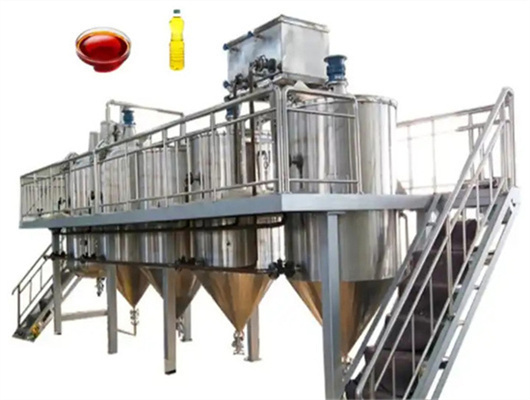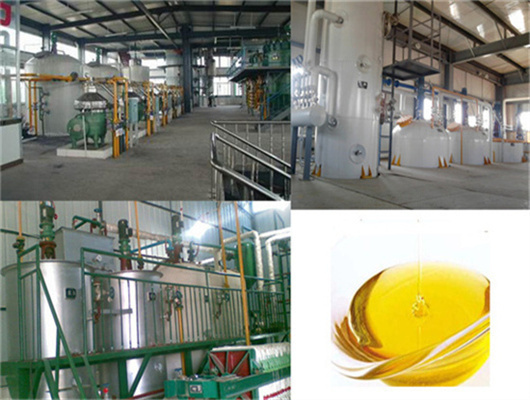As one of the important edible oils, the color of soybean oil is one of the key factors that influence consumers’ choices, and it is also an important indicator for measuring the quality of soybean oil. Therefore, in the production process of soybean oil, oil mills will take a series of measures to control the color of oil, which can not only improve the market competitiveness of products, but also ensure that consumers get high-quality and healthy edible oil. In the production of soybean oil, the selection of raw materials, processing technology, refining process and other aspects are important processing technologies that affect the color of soybean oil.

1). Raw material selection and pretreatment
1. Selecting soybean raw materials
The quality of raw materials directly affects the color of soybean oil. Selecting fresh and mature soybeans as raw materials is the basis for controlling the color of oil. The crude oil acid value and peroxide value of immature soybeans are high, which will lead to the decline of finished oil quality, the phenomenon of color reversion, and the deepening of oil color. Therefore, in the soybean procurement process, strict screening should be carried out to ensure the quality of raw materials.
2. Soybean pretreatment
During the pretreatment process, adjusting the parameters to solidify some pigments is conducive to subsequent decolorization. For example, through the treatment of the conditioning tower, phospholipids are combined with proteins, sugars, pigments, etc. to form bound phospholipids, reduce the content of free phospholipids, and thus reduce the color of oil. At the same time, high-moisture puffing technology is also a suitable pretreatment method, which can passivate phospholipids and keep them in soybean meal, reducing the influence of phospholipids on the color of oil.
2). Processing technology optimization
1. Leaching process control
During the leaching process, reduce the evaporation and stripping temperatures to reduce the generation of processing pigments. At the same time, the stripping tower structure is modified, such as using inclined plate perforated stripping tower and sieve plate stripping tower, so that the oil and steam are fully contacted, the stripping efficiency is improved, and the solvent residue in the crude oil is reduced, thereby reducing the color of the oil.
2. Filtration and purification
After leaching, the crude oil is filtered at multiple stages to reduce the content of solid impurities. Reasonable design of hydrocyclones, tank filters, pipeline wire mesh filters, etc., ensure that impurities in the mixed oil are well removed to avoid the generation of bad color in subsequent processing.
3). Refining process control
1. Decolorization treatment
Decolorization is a key link in the soybean oil refining process. By selecting white clay with moderate activity and large specific surface area as a decolorizer, the pigment in the oil is physically and chemically adsorbed. At the same time, according to the crude oil quality data, the operating parameters such as decolorization temperature, time and white clay dosage are adjusted to achieve a suitable decolorization effect. It is worth noting that excessive white clay dosage will lead to isomerization of the oil structure and affect the oxidative stability of the finished oil, so the amount of white clay should be reasonably controlled. Dephosphorization can also reduce the content of metal ions, because the content of phospholipids and metal ions in soybean oil is positively correlated. Reducing the phosphorus content will also reduce the metal ion content, which helps prevent oil oxidation and color reversion.
3. Deodorization
Deodorization can not only remove odor substances in oil, but also further improve the color of oil. In the deodorization process, the reaction and retention time are reasonably controlled to avoid excessive oxidation of oil. At the same time, the temperature is quickly lowered after deodorization, and the outlet temperature of the finished oil is controlled within an appropriate range to prevent the high temperature from causing the oil to contact the metal storage tank for a long time, which accelerates the formation of oxides and causes the oil to recolor.

4). Storage and Management
Storage conditions also affect the color of soybean oil. Non-metallic oil storage containers, such as plastic bottles, should be used to reduce the impact of metal ions on oil oxidation. At the same time, oil storage tanks, pumps and pipelines should be properly treated, such as internal anti-corrosion and anti-corrosion treatment, to reduce the impact of metal ions on oil oxidation and inhibit the color reversion of oil. In addition, the appropriate temperature and humidity should be maintained during storage to prevent oil from deteriorating due to environmental factors.
Controlling the color of soybean oil in soybean oil production requires starting from raw material selection, processing technology optimization, refining process control and storage management. By taking a series of measures, not only can the quality and market competitiveness of soybean oil be improved, but also consumers can be guaranteed to obtain high-quality and healthy edible oil.
